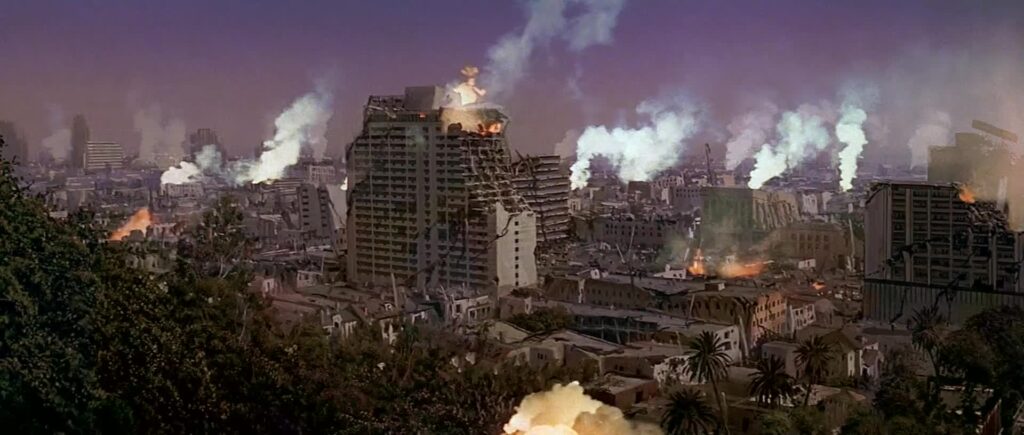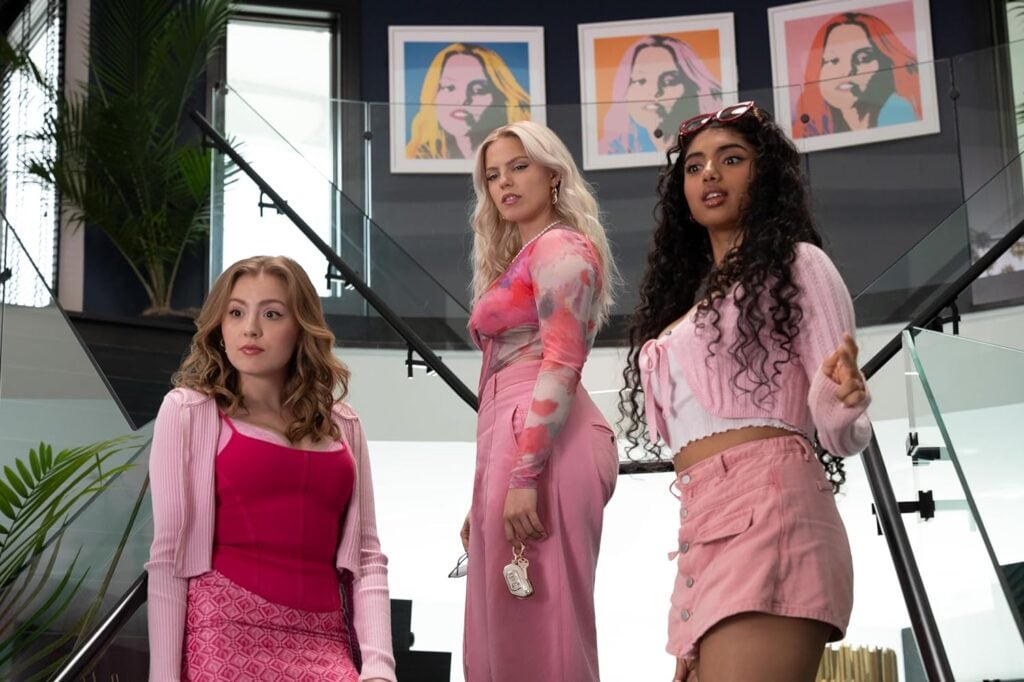When Universal Pictures’ execs came up with a marketing plan to attract audiences to its 1974 event movie Earthquake, one of the more extreme ideas proposed was to rain artificial polystyrene debris onto seated punters during the extended tremor sequences. But seeing as reports came in that pieces of ceiling were actually falling on audiences in some older theaters during the run, their initial scheme might have seemed redundant. The cause of those ceiling ruptures was producer Jennings Lang’s decision to settle for enhanced audio effects to represent the intense shaking of the earthquakes instead.
He could be forgiven, for this was the first time subwoofers had been used in cinemas, and Cerwin Vega “Sensurround” systems were subsequently installed in 17 US sites for the release of the film. The impact of 500W amplifiers driving four subs in each location belting out 17Hz to 120Hz signals at 120dB (SPL) underscored the film’s box office success in this new era of cinema audio. By 1976, 300 Sensurround sets were leapfrogging through cinemas across the continent for releases such as Midway (1976), Rollercoaster (1977) and even Battlestar Galactica, as late as 1979.

Since that time, low frequency audio reproduction from subwoofers has been a mainstay in theaters, but experimentation with deep bass harks back to the 1920s when 100Hz frequencies could be harnessed for music recording and playback. Woofers – rather than subwoofers – were used to achieve frequencies down to 40Hz, and by the mid-1950s, Altec Lansing’s 15” A-7 “Voice of the Theater” enclosures became the industry standard for movie sound reproduction, and as selected by the Academy of Motion Picture Arts and Sciences (AMPAS).
Although used experimentally for Superman The Movie (1978) at London’s Empire Leicester Square, Apocalypse Now (1979) was the first film to widely use the split surround version of ‘70mm 6-track Dolby Stereo’, and which included a dedicated low frequency track. Dolby decided not to use the previously adopted format (like Todd-AO) of five screen channels and one surround, and instead replaced the left-centre and right-centre screen channels with low frequency information for subwoofer consumption, and the high frequencies in those same tracks for split surrounds. Although this architecture existed purely in an analogue domain in the late 1970s, essentially the 5.1 arrangement had been cast, and still informs the basic layout of both professional and home cinema channels today.
Californian Raymond Dones received the first patent for subwoofers for home stereo systems in 1964. But it was Ken Kreisel (of Miller & Kreisel fame), inspired by his love of Bach and pipe organ music, who invented the very first two-channel satellite-subwoofer system, known as David and Goliath, in 1976, having built his first subwoofer when he was just nine years old. The M&K subwoofers would go on to become some of the most sought-after and high-performing home cinema products on the market.

Bass must be integrated seamlessly into a sound stage, and many in the audiophile community consider that subwoofers reduce clarity at the low end, particularly on certain genres of music. There’s no doubt, however, that the use of a subwoofer is the only efficient and practical method by which to recreate the extraordinary dynamics of today’s film soundtracks in the home. A number of manufacturers, including REL, SVS and KEF, now produce an enticing selection of maximized price/performance subwoofer options, incorporating multiple design philosophies in vented, passive and sealed enclosures.
At this point, you may well ask, why do we need subwoofers? Ever since the dawn of audio reproduction, the goal of recording engineers was to reproduce the entire accepted audible hearing range of 20Hz at the low end to 20kHz at the high end, for both music and media playback. Without the low frequencies intact, for example, you’d miss much of the fun and impact from explosions, rocket launches and dynamic electronic music scores on your favorite Blu-ray discs. But, in broad terms, there are a couple of challenges with achieving consistent and accurate flat-response bass.
The first is that an exponential amount of acoustical power is needed to move the ever-larger drivers as you move down the scale, so it makes sense to isolate the job into one or two relatively small dedicated boxes, while keeping satellite speakers compact too. A true full range speaker in the home would easily need to be the as tall as an average ceiling to be able to accurately reproduce the entire audio spectrum, and may still be susceptible to distortion.
The second problem pertains specifically to the home environment (and small recording studios), and is that of ‘standing waves’. Two truly full-range speakers would literally create stereo bass, meaning that two sets of competing bass information would be launched into the room, with neither capable of dealing with standing waves. It is preferable to use more than one subwoofer to avoid these waves either cancelling each other out or doubling down on each other. Even at 100Hz, the wavelength produced is close to 10ft. Standing waves can be reduced by the use of more than one sub putting out an identical mono signal, and many hobbyists decide to use three or four, further mitigating the effects of the audience – or part of the audience – sitting in the dip or peak of a waveform.
THX determined that the crossover in a residential AVR or controller should be set to 80Hz, meaning that all frequencies below are filtered into a subwoofer and are essentially non-directional, meaning that you ‘feel’ the sound, rather than perceive its location or origin. It’s also worth pointing out that the LFE (low frequency effects) channel, or ‘.1’, when referred to in 5.1, or 7.1 in the home, should not be termed the ‘subwoofer channel’ as such. Although LFE is directed to a subwoofer, the bass management menu option in home cinema AVRs and controllers gives the user an ability to select which kind of speakers he is using. If LCR speakers are not full-range, a user can select ‘small’ which, in turn, redirects all frequencies below a manually set crossover point (usually 80Hz) to the subwoofer as well, so the two are literally mixed in together.
The management of bass in the cinema and home is a science in itself, but we should be thankful to Universal Pictures in the 1970s for starting the earthquake, and to the pioneers who were found a way to give us the same effect at home.
Martin, a seasoned journalist and AV expert, has written for several notable print magazines. He’s served in key roles at Lucasfilm’s THX Division, NEC’s digital cinema division, and has even consulted for DreamWorks. Despite his illustrious career, Martin remains rooted in his passion for cinema and acting, with notable appearances in several Spielberg films, Doctor Who, and Star Wars: The Empire Strikes Back. He currently resides in San Francisco.
Post Disclaimer
Some of our content may contain marketing links, which means we will receive a commission for purchases made via those links. In our editorial content, these affiliate links appear automatically, and our editorial teams are not influenced by our affiliate partnerships. We work with several providers (currently Skimlinks and Amazon) to manage our affiliate relationships. You can find out more about their services by visiting their sites.






Similar threads
- DaveF
- Speakers & Subwoofers
2